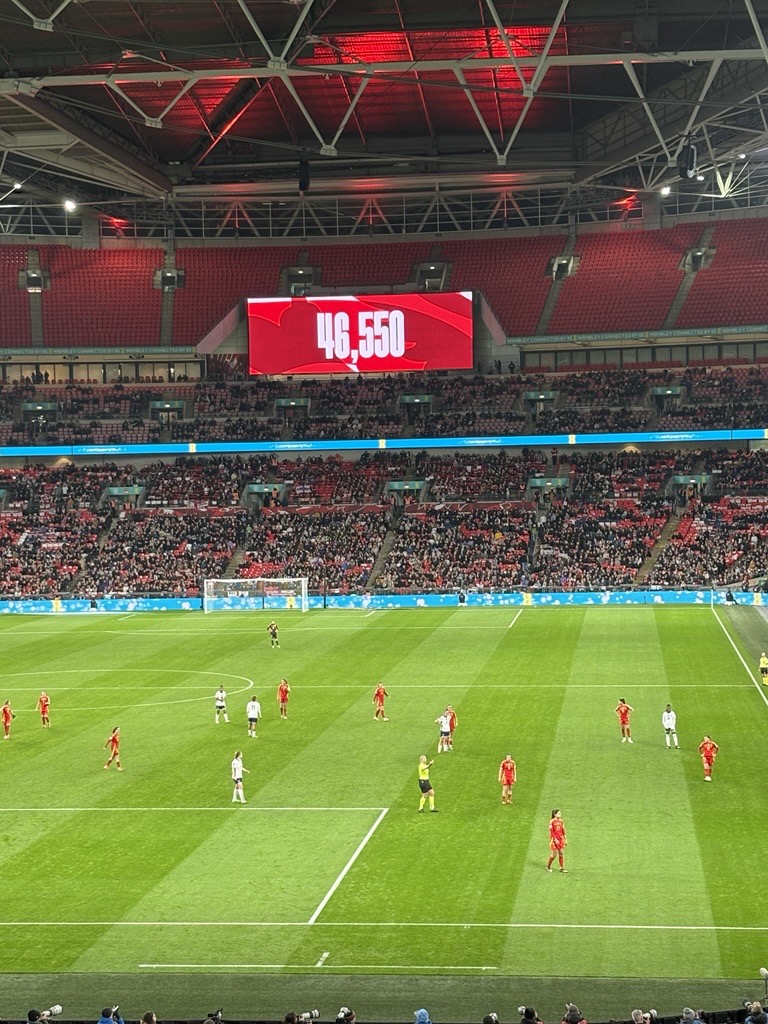
A New Generation of Fans, A New Era for the Game
Witnessing the Rise of Women’s Football Through My Daughter’s Eyes

Five years ago, women’s football was scarcely visible on the mainstream sports radar. Matches seldom filled large stadiums, media coverage was minimal, and young girls lacked prominent role models to inspire their football aspirations. Today, the transformation is nothing short of remarkable.
This week, I took my 11-year-old daughter to Wembley Stadium to watch England’s Lionesses face off against Spain. Our family has always been passionate about football; she and her older brother were actively involved in grassroots football for years, with their father coaching the under-13 teams. Meanwhile, I’ve spent countless weekends shivering in the rain, cheering from the sidelines. Yet, this experience was different. It wasn’t just about playing or watching football; it was about immersing ourselves in a vibrant and growing community of fans.
The atmosphere at Wembley was electric. A crowd of 46,550 filled the stadium, a testament to the surging popularity of women’s football. Families, young girls and boys donned in England jerseys, and enthusiastic supporters chanting well before kickoff—it was clear that this was more than just a game; it was a significant cultural moment. For my daughter and her school friend, attending this match wasn’t merely about spectating; it was about feeling a profound sense of belonging to a larger movement.
An unexpected event added to the evening's magic as the second half commenced. The stadium lights momentarily went out, and instead of unease, the crowd responded with unity. Thousands of spectators illuminated the arena with phone torches, creating a mesmerising sea of lights. This spontaneous display turned Wembley into a scene of collective brilliance, showcasing the community's spirit. My daughter watched in awe, fully absorbed in the shared experience, which I can only describe as an unforgettable event that deepened her connection to the sport.

Sharing this experience with her friend amplified its significance. Our research indicates that peer influence plays a crucial role in developing young fans; when friends share an interest, it enhances the activity's value. For my daughter, this night was more than entertainment; it was a pivotal moment in shaping her identity and passion for football. Observing a team of skilled, determined women commanding a stadium full of supporters provided her with tangible proof that women have a rightful place in this sport.
The following day, she eagerly recounted her favourite moments, discussed the players she admired, and inquired about attending future matches. This is how fandom begins—it evolves from a single experience into a core aspect of one's identity. Witnessing the Lionesses in action reinforced the notion that football is an inclusive space, open to all who wish to participate.
The rapid advancement of women’s football in England is evident. The Women’s Super League (WSL) achieved full professional status in 2018, marking a significant milestone. The 2019 FIFA Women’s World Cup further elevated the sport, drawing record-breaking viewership and global attention. The momentum continued with the 2022 UEFA Women’s Euros, which shattered attendance records, including a historic final at Wembley.
Despite these strides, true equity remains an ongoing pursuit. Our research in The Global Kids Sports Report reveals that only 28% of tween girls support women’s leagues or female athletes, primarily due to limited exposure and accessibility. Disparities in media coverage, investment, and grassroots support for girls’ sports persist as substantial barriers. Many girls still face challenges accessing public sports facilities and often discontinue participation due to financial constraints or the pressures of structured commitments.

Looking ahead, if current growth trajectories persist, women’s football is poised to reach unprecedented heights in the coming decade. Enhanced visibility through mainstream media partnerships, increased sponsorship investments, and robust development pathways for young female athletes will be pivotal in sustaining this progress. However, the most profound change occurs at the grassroots level. By bringing our daughters and sons to matches, encouraging their active participation, and advocating for equal opportunities, we embed the sport more deeply into our cultural fabric. As our research emphasises, seeing is believing—the more young girls witness women excelling in football, the more they will recognise it as a space where they, too, belong.
That evening at Wembley was more than just attending a football match; it was about being part of a cultural evolution—one that my daughter is now actively engaged in. She entered the stadium as a general football enthusiast and left as a dedicated supporter of the Lionesses. In her journey, I glimpsed the promising future of women’s football. While the path to full equity is still unfolding, we are undoubtedly progressing toward a more inclusive and vibrant sporting landscape.
For those interested in exploring more about the milestones in women's football, you can visit the official FIFA Women's World Cup websites:
2019 FIFA Women's World Cup: https://www.fifa.com/en/tournaments/womens/womensworldcup/france2019
2023 FIFA Women's World Cup: https://www.fifa.com/en/tournaments/womens/womensworldcup/australia-new-zealand2023


